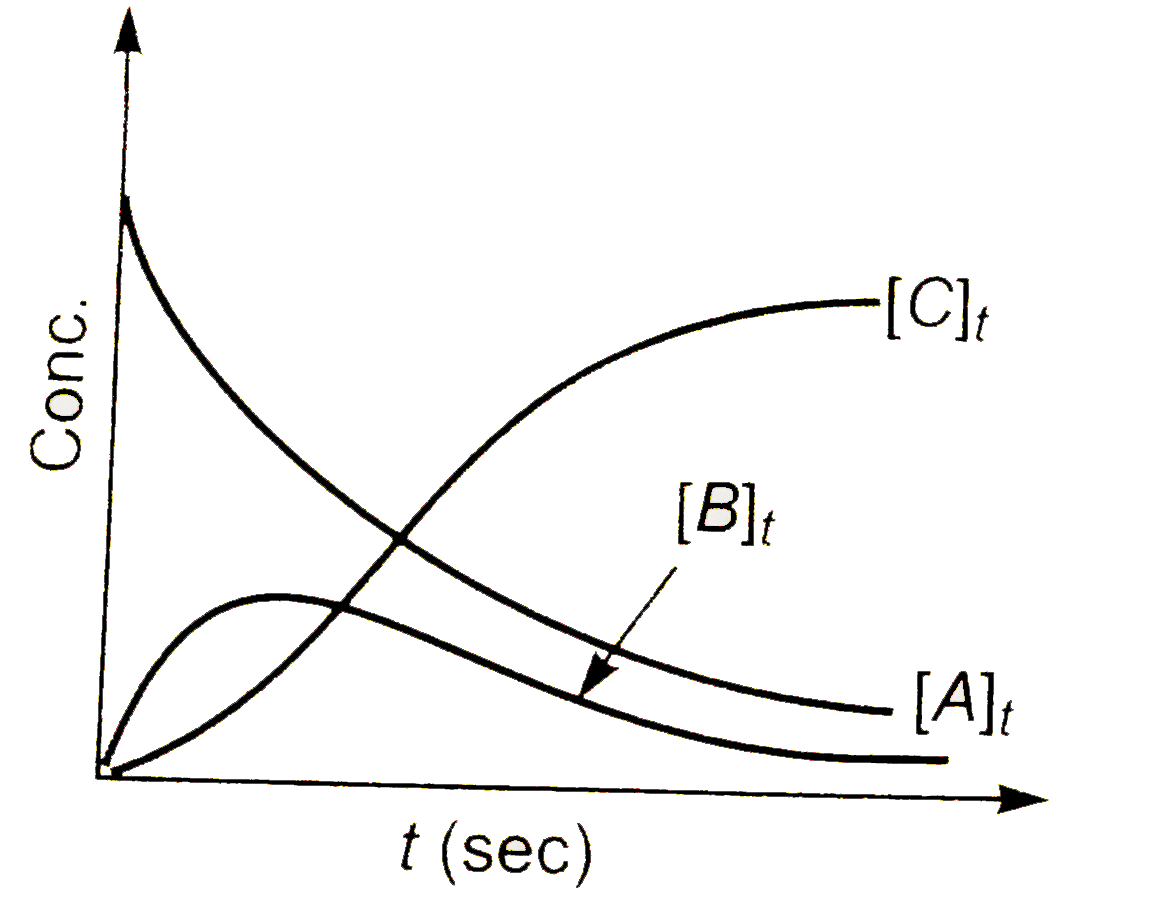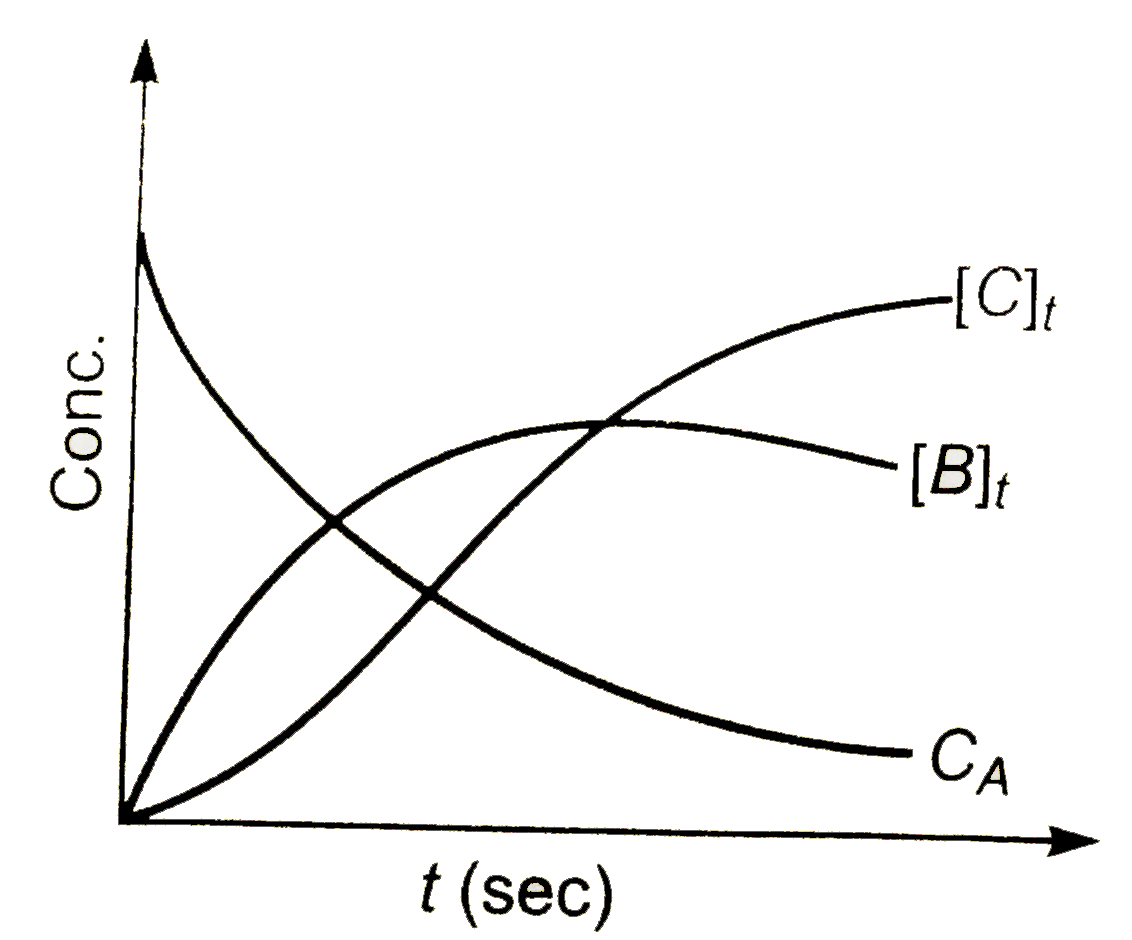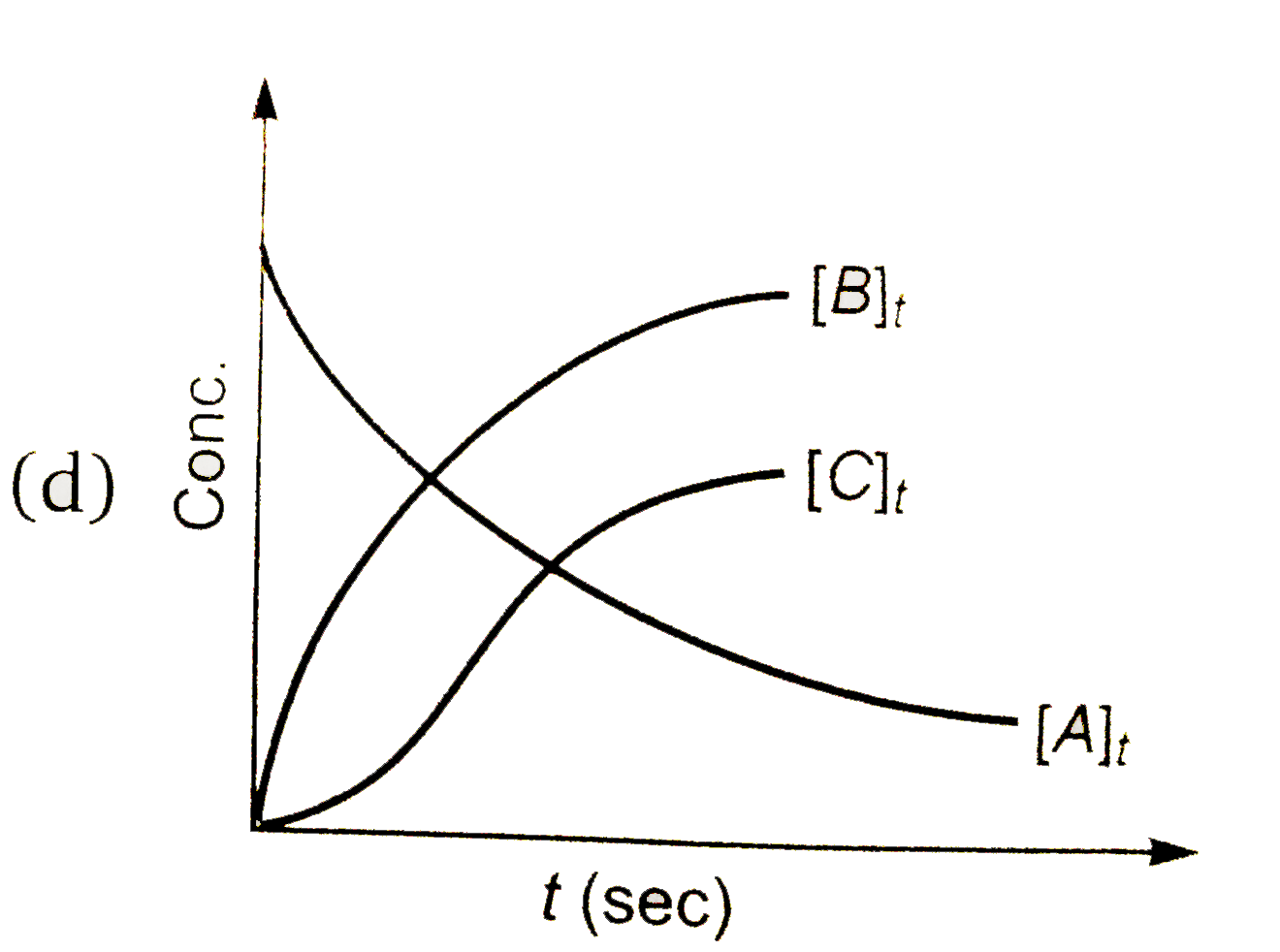The reaction cis-Xcis-Xkf<kb⇒ trans-X is first order in both direction At 25∘C, the equilibrium constant is 0.10 and the rate constant kf=3×10−4s−1 In an experiment starting with the pure cis- from , how long would it take for half of the equilibrium amount of the trans-iomer to be fromed?Solution in Punjabi
150 sec
200 sec
240 sec
210 sec
The correct Answer is:D
Step by step video & image solution for The reaction cis-Xcis-Xunderset(k_(b))overset(k_(f))ltimplies trans-X is first order in both direction At 25^(@)C, the equilibrium constant is 0.10 and the rate constant k_(f)=3xx10^(-4)s^(-1) In an experiment starting with the pure cis- from , how long would it take for half of the equilibrium amount of the trans-iomer to be fromed? by Chemistry experts to help you in doubts & scoring excellent marks in Class 12 exams.
Updated on:21/07/2023Topper's Solved these Questions
- CHEMICAL KINETIC & NUCLEAR CHEMISTRYBOOK - NARENDRA AWASTHICHAPTER - CHEMICAL KINETIC & NUCLEAR CHEMISTRYEXERCISE - Level 2 (Q.33 To Q.35)
2 Videos
- CHEMICAL KINETIC & NUCLEAR CHEMISTRYBOOK - NARENDRA AWASTHICHAPTER - CHEMICAL KINETIC & NUCLEAR CHEMISTRYEXERCISE - Level 3 - Passage
1 Videos
- CHEMICAL KINETIC & NUCLEAR CHEMISTRYBOOK - NARENDRA AWASTHICHAPTER - CHEMICAL KINETIC & NUCLEAR CHEMISTRYEXERCISE - Level 2
1 Videos
- SURFACE CHEMISTRYBOOK - NARENDRA AWASTHICHAPTER - SURFACE CHEMISTRYEXERCISE - Level -2
1 Videos
Similar Questions
In a sample of wood, the reading of a counter is 32 dpm and in a fresh sample of tree it is 122dpm . Due to error counter gives the reading 2 dpm in absence of .14C . Half life of .14C is 5770 years .
The approximate age (in years) of wood sample is :
View SolutionTwo consecutive irreversible first order reactions can be represented by
Ak1−−→Bk2−−→C
The rate equation for A is readily interated to obtain
[A]t=[A]0.e−k1t , and [B]t=k1[A]0k2−k1[e−k1(t)−e−k2(t)]
When k1=1s−1 and k2=500s−1 , select most appropriate graph
a) b)
b) 
c) d)
d) 
View SolutionThe forward rate constant for the elementary reversible gaseous reaction
C2H6<⇒2CH3is1.57×10−3s−1at100K
What is the rate constant for the backward reaction at this temperature if 10−4 moles of CH3 and 10 moles of C2H6 are present in a 10 litre vessel at equilibrium .
a) 1.57×109Lmole−1s−1
b) 1.57×1010Lmole−1s−1
c) 1.57×1011Lmole−1s−1
d) 1.57×107Lmole−1s−1
View Solutionfor the graph below, select correct order of temperture ?

View SolutionThe unit of equilibrium constant K_(c) for the reaction A+B hArr C would be
View SolutionA proposed mechanism for a reaction ArarrB is A underset(k_(2))overset(k_(1))hArr C " " C underset(k_(4))overset(k_(3))hArr B Determine the expresison for the equilibrium constant for the overall reaction in terms of the rate constants.
View SolutionThe reaction cis-Xcis-Xkf<kb⇒ trans-X is first order in both direction At 25∘C, the equilibrium constant is 0.10 and the rate constant kf=3×10−4s−1 In an experiment starting with the pure cis- from , how long would it take for half of the equilibrium amount of the trans-iomer to be fromed?
View SolutionConsider the following reversible first - order reaction of X at an initial concentration [X]0. The values of the rate constants are kf=2s−1 and kb=1s−1
Xkr⇐⇒kby
A plot of concentration of X and Y as function of time is
View Solution(a) CH3−CH=CH−CH=CH−C2H5 (Molecule with dissimilar ends).
Here n=2, So Number of G.I = 4 [cis, cis), (trans, trans), (cis, trans,), (trans, cis)]
(b) CH3−CH=CH−CH=CH−CH3 (Molecule with similar ends)
Here n=2, So Number of G.I =3 [(cis, cis), (trans, cis), (cis, trans) = (trans, cis)]
(c) CH3−CH=CH−CH=CH−CH=CH−CH3 (Molecule with similar ends)
Here n=3, So Number of G.I =6
[(cis, cis, trans)= (trans, cis, cis) (cis, trans, trans) = (trans, trans, cis), (cis, cis, cis) (trans, trans, tans), (cis, trans, cis, (trans, cis, trans)]
(d) Let us draw the total stereoisomers of CH3−⋆CH∣OH−⋆CH∣OH−⋆CH∣OH−CH3
(e) Let us draw the total stereoisomers of CH3−⋆CH∣OH−⋆CH∣OH−CH3
(f) Let us draw the total stereoisomers of CH3−CH(OH)−CH2−CH=CH−CI
View SolutionIn terms of rate constants for forward and backward reactions (kfandkb) , equilibrium constant of a reaction is equal to …………..
View SolutionFor a reversible exothermic reaction , which is the effect of increasing temperature on the equilibrium constant (keq) and on the forward rate constant (kf)?
View SolutionThe reaction Cis−X⇔ trans -X 1st order in both directions .At 25∘C , the equlibrium constant is 0.10and the constant kf=3×10−4sec−1 In an experiment starting with the cis form , How long will it take for half of the equilibrium amount of the trans to be formed?
View SolutionFor a reversible reaction (first order in both directions) Aunderset(k_(1))overset(k_(2))hArrB k_(1) and k_(2) are the rate constant. If equlibrium constant (K) is greater than unity, then :
View Solutionस्थिर ताप पर किसी अभिक्रिया के लिये साम्य स्थिरांक Kp व Kc का सम्बन्ध .............. है |
View SolutionIf K_(b) and K_(f) for a reversible reactions are 0.8xx10^(-5) and 1.6xx10^(-4) respectively, the value of the equilibrium constant is,
View SolutionWhich of the following relative value of k_(f) (rate constant of forward reaction) and k_(b) (rate constant of backward reaction) results in an equilibrium mixture that contain large amount of reactants and small amounts of products?
View Solution
